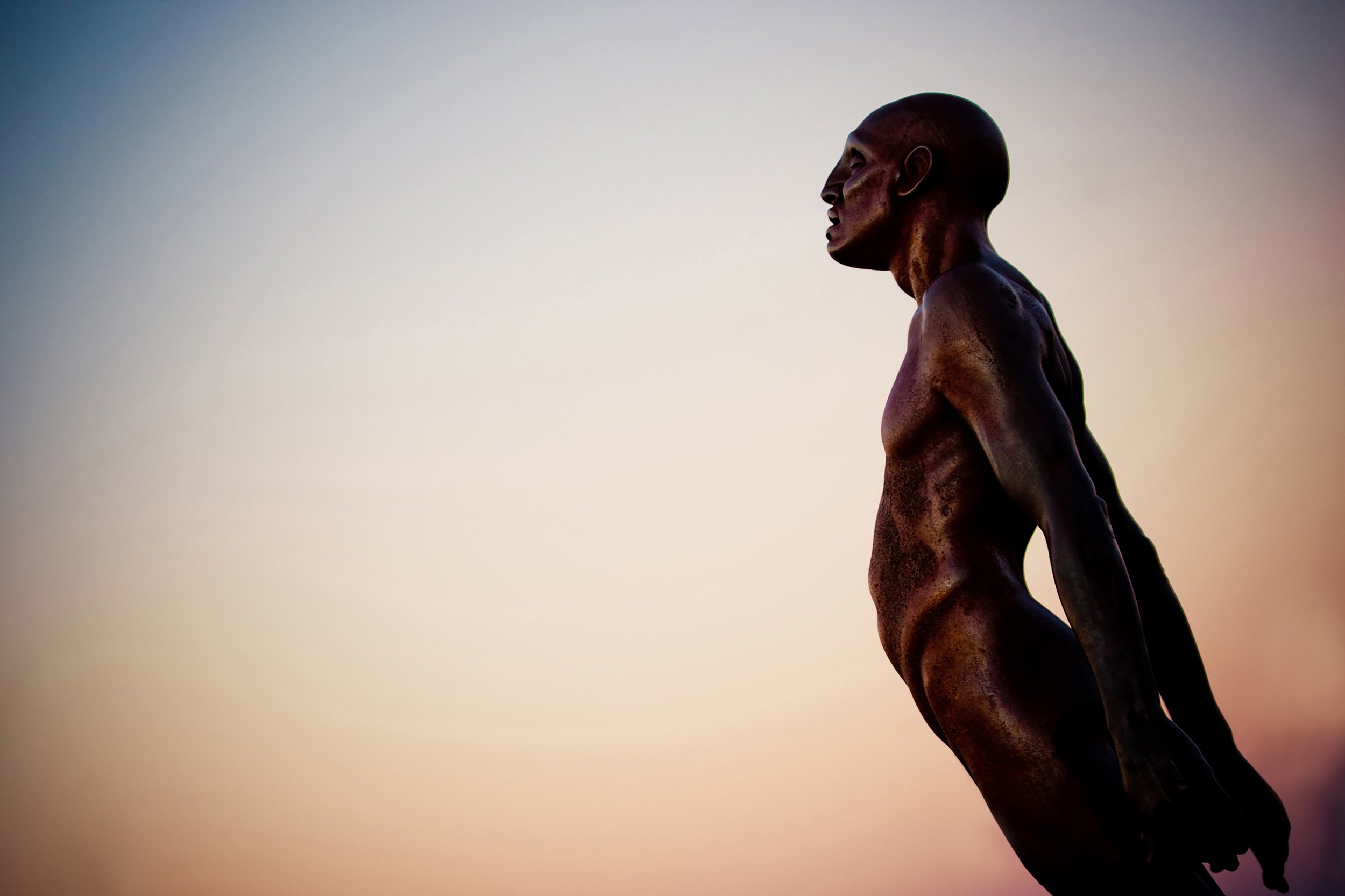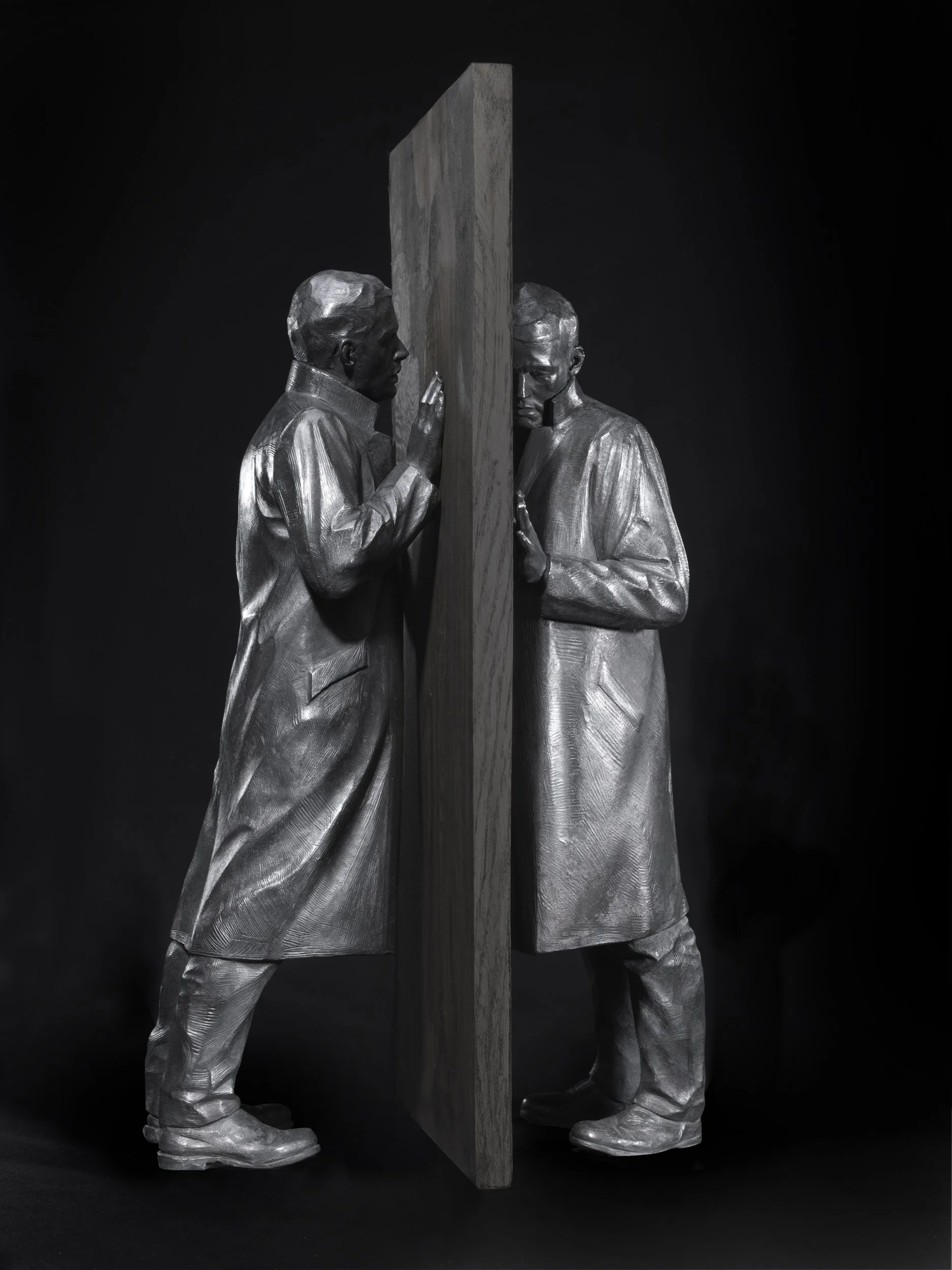ABOUT CASTINGS
SOLACE IN THE WIND
Solace in the Wind, the iconic landmark on Wellington’s waterfront, is arguably New Zealand’s best-loved public artwork.
The two-metre cast-iron statue depicts a naked man with his arms flung back behind him, facing out towards the elements of Wellington’s windy harbour. It is located on the waterfront outside The Museum of New Zealand Te Papa Tongarewa Cable Street, Te Aro, Wellington
Solace was initially installed as a temporary loan to the city in February 2008. Personally funded and sculpted by Max, the clay sculpture was created at the multi-academy award-winning studios of Weta Workshop, where Max was working as head of the sculpting department. It was later reproduced in iron at the foundry ‘Cast Components’ in Palmerston North. Wellington City Council purchased the sculpture after just three months into its 12-month temporary loan.
Further full-size editions of the work can be found in private collections worldwide, from rooftop sculpture gardens in Munich to nature reserves in the outback of Australia.
VOICE 2022
"Voice" shows two men on either side of a wall or door. While the viewer is privy to their close proximity to one another they seem unsure about one another's existence. The man on the left has placed his head against the barrier as if listening for movement or communication. On the right, a second man presses his open mouth to the other side but seems silent and frozen in fear. Tooker cropped the image closely so that we focus on the relationship between the two men as they breath quietly and await contact. A delicate tension is established between the two figures as they wait. Based on the 1977 painting Voice by George Tooker this new sculptural work is an ode to one of Max’s favourite painters and paintings which greatly influenced his early studio practice. The life sized pair were sculpted in Pietrasanta Italy and the bronze maquettes cast at the world renowned Pangolin Foundry in England.
THE WHITENING SNOWS.2020
Following on from the success of Breath of Life came The Whitening Snows, a sculpture inspired by the work of the inimitable New Zealand artist Charles F. Goldie. Reaching a peak of popularity in the early years, Goldie reigned over the Auckland art market in the early years of the 20th century, Goldie’s paintings have enjoyed posthumous fortunes and are revered as ancestral portraits of importance to Māori while others denounce his paintings as documents of colonial racism. It is safe to say that the mystique surrounding Goldie and his work is unparalleled in New Zealand Art.
Whilst living in New Zealand Max was enchanted with the life and work of Goldie admiring in particular his portraits known as ‘Noble Relics' created in the first decade of the 20th century. This piece cast by Pangolin foundry in the UK is inspired by Goldie's numerous portraits of Wharekauri Tahuna (Ngāti Manawa). Transforming Goldie’s attention to detail and brush strokes into a sculptural form this work pays homage to Goldie and embodies Max's love for and fascination with his skill and practice.
BREATH OF LIFE
This piece was inspired by the life cast taken during the 1830’s by Parisian phrenologist Pierre-Marie Alexandre Dumoutier of Ngāi Tahu chief Piuraki, also known as John Love Tikao. Piuraki later became an important advocate for Māori and a signatory to the treaty of Waitangi. A uniquely New Zealand custom, traditionally used as a greeting or farewell; The Hongi, the ha (or breath of life), is exchanged and intermingled. The breath of life can also be interpreted as the sharing of both party’s souls. Immediately identifiable and memorable the hongi is an intimate and characteristic part of New Zealand culture.





